Season’s greetings, and an invitation
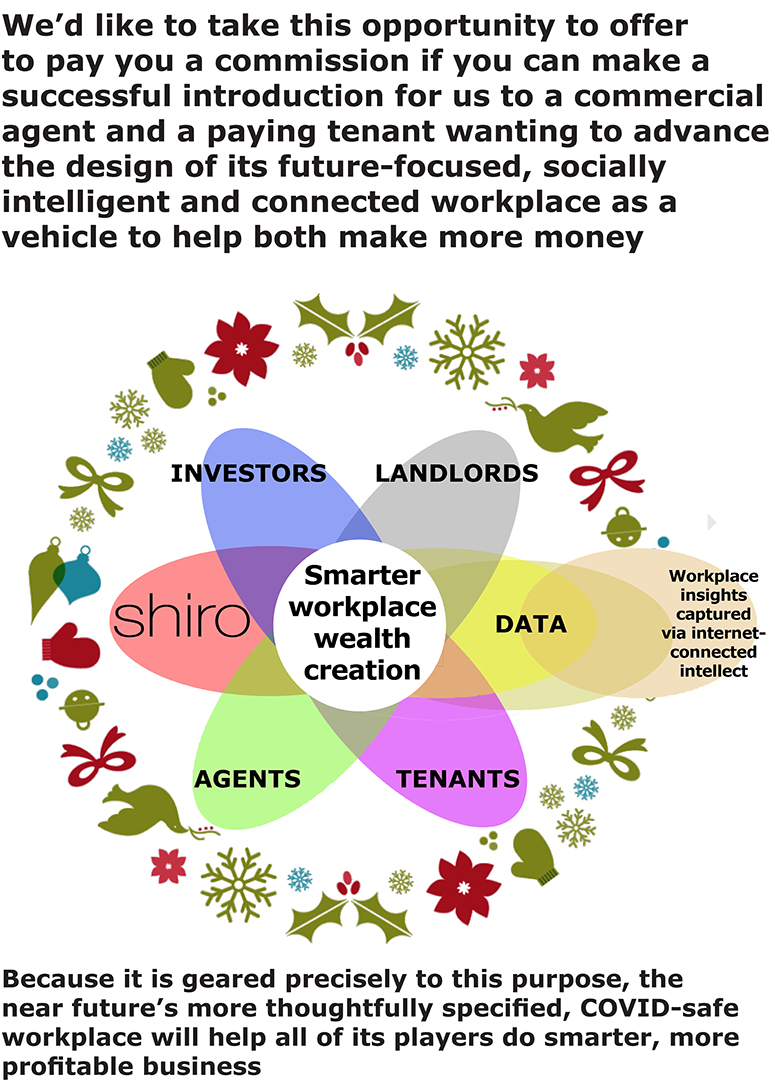
| Following our previous correspondence, if your own company does not contain a commercial agency component but you can make a successful connection for us to someone else whose business does, to whom the following is of interest, once again, we will be more than pleased to make good on the offer in my headline, above. These are perilous times for some commercial agents, who have seen the bottom almost literally drop out of their market on account of COVID and increasing numbers of people working more often from home. Yet, even in such times of transition, some ideas, once heard, are irresistible and obvious, and the early pioneers who back them attract both attention, and, if they are fortunate and their timing is good, they also make a lot of money. As these agents need to adapt to change and adopt a new workplace property product to sell if they are to stay in business, so my purpose here is to introduce one. As it is also one about which I have previously been paid to write professionally in print in both Australian property and design magazine titles (see links beneath), I am confident that this is a story every business owner making decisions about property costs will want to read. Further, I believe what I am describing has not just both a proven audience and reader interest, but also clear, and, once-seen, inevitable, commercial mileage. A more thoughtfully specified “office of the connected intellect” is a new workplace product businesses will actually want to buy, because it is one that will assist its occupiers in generating more wealth from their working environments. It is a workplace designed purposefully to speed improvement and efficiency returns from the sum of intelligence contained in the tenant’s business. In any earlier time, it would have been impossible to reach into the collective consciousness of those across any organisation to specify and design such an environment. |

| Yet, as our use of and familiarity with the potential of the social internet grows, we have reached an age of unprecedented opportunity in making the best use of intelligence and potential for accelerating group learning across the web-age business. And, although it is still a force unrecognised and unorganised in most organisations, we’ve now arrived at “peak social internet literacy.” This entirely naturally occurring capacity’s practical applications are also easily demonstrated, as – whether they use it or not – this is the point at which every employee in every business knows how to use social media to write online, upload and share material and to make comments about those items uploaded by others. By channeling and amplifying this collective intelligence through the use of the mirroring, private, internal Facebook-like technologies now available within every workplace, we now have a way of listening and digging in detail to understand the experience, knowledge and insights of those who will occupy a workspace. Through it, workplace knowledge, insight and capacities for sharing knowledge and learning that were once out of reach are no longer beyond our grasp. This new proficiency has massive implications for organising and enhancing powerful commercial knowledge, and in the design and accommodation of organisations to optimise its constant competitive creation, flow and growth. Landlords able to understand this can learn how to help those who occupy their spaces get smarter, more adaptable, more productive and able to create more wealth, also in relative COVID-safety. Against this potential, the space given to work is no longer a passive ingredient and, like all others connected by the internet, the workplace is being driven to become an information business. And, because the data-generating focus of a deliberately knowledge-engineered office can assist a business to learn and grow, it therefore yields information of great future value to every landlord, tenant and agent. We apply our native, first-hand experience in managing this resource to workplace briefing – see beneath – to help tenants enhance the wealth-creating potential of their place of work. And our intention is to split the proceeds with the agent able and willing to initiate and facilitate this inevitable profit and attention-generating transition. Please contact me if you can assist and wish to be rewarded for making the connections that can advance this initiative, and I will look forward to the prospect of that conversation. But that possibility aside, if this is of no interest, thank you for reading this far anyway. Moreover, we at Shiro Architects wish you a happy festive season and a prosperous New Year, and I look forward to speaking with you again at some point over the coming months. Kind regards, and bon Noël |

Graham Lauren
0416 171724
Shiro Architects
Award-winning, customer-driven spaces to feel good about
Winner, 2017 Queensland State Award for Commercial Architecture
Workplace design for more reliable wealth creation
Through Shiro Architects’ unique design recipe, our briefing exercise focuses, in summary, to understand:
- Employees’ perceptions of COVID-safety and what about their own business’s current workspaces and ways of working, and experiences of using the common spaces in the building outside their offices, makes them uneasy about the possibility of contracting the coronavirus, and what actions they and the landlord could take to make them feel safer in this environment.
- What about the workplace they work in, and the ways in which they work could improve their current employee experience (EX).
- What about the workplace they work in they believe could grow the collective intelligence of their organisation to make its business smarter, more competitive and more prosperous.
- What about the design of the spaces in which they work could remove obstacles to improve the daily productivity and creative workflow of their office and enhance its ability to stimulate business growth through the generation of new wealth-creating knowledge.
- What about the design of their workplace could be amended to future-proof it to aid new thinking and adaptability in managing change in business process, culture and strategy.
Why a credibly COVID-safe office seen also to boost smarter workplace wealth creation will generate widespread publicity and business attention
In September 2020’s <Harvard Business Review>, Richard Florida, author of The Rise of the Creative Class (2002) and professor at the University of Toronto wrote, “Figuring out who will work from home and who will require actual office space, which offices to prune and which to keep, how they will be configured and shared, and precisely where they should be sited, requires more strategic thought, analysis, and planning than ever.”
Locally, the ABC’s <Radio National>, likewise, gave recent coverage to what will happen to all the CBD office spaces around the country, now working from home has become more entrenched, with employers keen to save on their real estate costs.
And, even as I began to write this, on December 4, 2020, the <Australian Financial Review> reported on Queensland’s giant property investor, QIC Global Real Estate, saying there will be a negative impact on the demand for office space when, post-COVID, half of all office workers spend two days a week at home.
None of this augurs well for those with interests in the continued health of the market for commercial workplace property as they once knew it.
Nevertheless, the pandemic is just an accelerant of trends towards the minimisation of the office workplace that, amid rapid digitisation, were already well under way, even before its onset. (As an independent journalist, formerly with the <AFR>, I was paid to write and research on this in the pieces I’ve linked to beneath.)
But, like all market transitions, the COVID-19-induced commercial property crisis contains an opportunity, and it is one that will shift forever the business model terrain on which, amid the market’s performance-oriented digital transformation, the future’s commercial workplace will be fought.
And it makes it all the more important that if they value their survival, today’s current crop of commercial workplace property agents must be careful not to miss it.
Beating property’s trap of the vanishing status quo
In property, as in all else, the “trap of the vanishing status quo” holds that the world is going to change; whichever way things go, the status quo is going to vanish.
Under the trap, those trying to figure out if life is better if they act in the new world, or if they could somehow remain exactly where they are now are asking the wrong question.
The question they need to ask is, “Is life better if we act, or if we don’t, and the world passes us by?” Suddenly, their analysis becomes really simple.
The simple fact is that against this analysis, in this context, the most likely commercial-agency losers will be anyone who doesn’t – or refuses to – believe that the nature of the office is to become increasingly connected and data-driven.
Essentially, the social digitisation of the workplace into a more effective money-making machine built around the intelligence of the minds that will occupy it, means it, like every other connected device, will yield data that can be measured and managed for subsequent improvement.
Those agents will be doubly disabled if they fail to recognise that its improvement and transformation will be driven by understanding better through readily available data the needs of those who work in it and modified in step with what can be learnt about them.
As I have already published professionally on this subject in both the Australian construction and design media, I am confident that this is a story every business owner making decisions about property costs will want to read.
Further, I believe what I am describing has not just both a proven audience and reader interest, but also clear, and, once-seen, inevitable, commercial mileage.
Those agents armed with knowledge of how to make this wealth-creating data work best for themselves and their clients will make the most money in the future.
They will also differentiate their businesses by growing a body of relevant future-oriented insight and business expertise against which those without it will find it hard to compete.
That I have had these pieces published already suggests also that there is more media coverage and attention within relatively easy reach for those able to get in at the early stages of making this now apparent emerging workplace transition work, as we are in the age of digital transformation in every sensor we can touch and imagine.
We want to work with those keen to take advantage of COVID-19’s market dislocation
Amid such dramatic disruption to demand, every commercial landlord and agent keen to stay in business needs a new workplace product to promote and sell to tenant companies.
And, when they can assist that tenant such that it can run a more efficient workplace that makes more money, the unique knowledge, modern expertise and reputation commercial agents can build as a result should bring them more landlords to represent and a lot more attention.
From my own experience, such innovations are also likely by far to be most interesting to the media when they find their way into the market promoted by upstarts at the margins, rather than by the big, mainstream CBD agencies.
We only need just one small pilot example to demonstrate this in a real-world case study, and if we can find a way to do this together, we will both get that attention and make money, because I will line up the media coverage that must be written about it, and because demand may most appealingly present itself at the low end of its market, with smaller, younger, more vital companies keen to get their own publicity advantages.
And better still, we will also pay you a commission for an introduction if you are able to connect us to someone who pays us to make this work for their business.
Again, there is no actual sales effort required on your part – all you need to do is make the connection – as I have first-hand experience and knowledge of what I write, and I will conduct all the work of explaining to that client-tenant how it will work for their business.
Build your own commercial property data advantage
In this digital-social world, only design for the people, by the people, around those people’s interests can bring a business closer to its customer to identify and recognise their “unexpressed” needs.
Data will provide the insights into the new services that can be provided to bring workplace suppliers closer to their customers.
As a parallel prior example, Dell Computer captured and used similar customer knowledge to take its business from a standing start to become a $US12 billion company in just 13 years.
Through the data it captured, it could get closer to those customers, to learn about those businesses in ways no other rival could challenge.
Those similarly able to get inside the consciousness of organisations to guide the acquisition and configuration of facilities that stimulate both new ideas and new revenues will, likewise, earn a premium.
The reason Amazon succeeds such that its founder Jeff Bezos has become the world’s richest man is because it understands its customers.
In the emerging data-driven property economy, it will be the cancer of ignorance that kills others.
Where does “social internet literacy” come from?
Social internet literacy is what gives us the creative force of the connected intellect, but of course, I can’t claim to have “created” social internet literacy any more than anyone else can claim to have invented reading, writing, typing or listening (and, granted, others may refer to this latest emergent human-productivity capacity differently elsewhere – I just haven’t found it).
However, to the best of my knowledge, and unlikely as it sounds, even to me, because of my long-standing fascination with workplace social technology-driven organisational learning, I believe I may be among the first to have identified and articulated its presence as a pervasive, potent, largely under-realised and increasingly valuable management resource.
My published writing on workplace strategy and the application of “social internet literacy” to building and workplace design
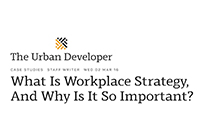 | 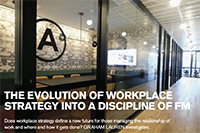 | |
In 2016, I wrote What Is Workplace Strategy, And Why Is It So Important? for The Urban Developer. I pointed to the paradox that demand for CBD office space had never been stronger but that technology automating a number of office jobs out of the workforce could kill demand. | I was commissioned to write The Evolution of Workplace Strategy into a Discipline of FM for the January 2017 issue of FM (Facility Management) magazine, and was then invited in March 2017 to chair an expert panel on the subject of the evolving workplace at the Total Facilities Conference at Sydney’s Darling Harbour. | |
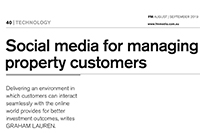 | 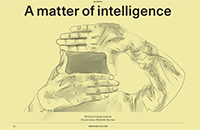 | |
More recently, in September 2019, I published Social Media for Managing Property Customers – (not my choice of headline), also in FM. | And then, in February 2020, I then published A Matter of Intelligence (again, not my headline), specifically on the application of social internet literacy to the future shape of a smarter workplace in InDesign magazine. |
About me
As a journalist, I have made a living from researching what is as yet unknown and reporting it back to readers who are interested in and can use and learn from its content.
I am a former sub-editor (a key editorial sense-making and quality control role in professional media) on the pages of The Australian Financial Review newspaper group, and my sensitivity to the need for internet-driven digital-age organisations to learn and develop is inspired by my MBA (Technology) from the University of New South Wales in Sydney, Australia. This qualification focuses on creating and managing the businesses of the future, addressing changes driven by advances in digital and networked technology.
As a consequence of my education, I am particularly interested in the need for networked, wholly connected businesses to adapt to learn fast, and in reporting on the unexpressed knowledge to be found in every workplace that can enable this.
My proposition is to apply my first-hand workplace insight of what I describe, gained both in professional media but also from working, at the corporate coalface, using the relevant workplace social technologies, for similar knowledge-seeking purposes, in its 200-strong software development team on a major software transformation project at the headquarters of the Commonwealth Bank of Australia in Sydney.
A former client working for the nation’s largest bank says this of the value of my work
“At CBA, Graham was tasked with building a curated knowledge base for a critical and complex project the bank was undertaking. I served as Graham’s boss during this period and have seen Graham use this project experience, combined with his MBA learning, to evolve a new understanding about how organisations can build ‘corporate memory’ and embed learning processes to better guide leadership insights.
“Based on the many conversations I have had with Graham since, I have seen the passion and knowledge Graham brings to the topic of workplace knowledge capture and organisational learning, grow and mature such that Graham is now an authority on the topic. Effective digital learning is an essential capability to acquire for any organisation hoping to have a prosperous future.”
Source: Brian Davis, technology innovator, founder Software Symphony and senior software architect at the Commonwealth Bank of Australia.
About Shiro Architects in a few words and pictures
Our practice’s work presents a mix of commercial, hospitality and multi-residential projects, and our design director Hiromi Lauren’s exceptional skills are based on her 20 years of working closely with the internationally renowned, multiple award-winning architects Harry Seidler and Associates – where Hiromi was one of his favourites.
Her Seidler experience aside, Hiromi is also an award winner for her personal architectural achievements, having, on establishing Shiro Architects, won the 2017 Queensland prize for commercial architecture for her own first building in her own right, the Gold Coast KDV Golf and Tennis Academy.
As a practice, our firmly held view is that architects should always prioritise making money for clients by making better use of space, while delivering beautiful, practical built solutions.
| At Seider’s, Hiromi earnt Harry’s esteem not least by doing precisely this, by doing something even he couldn’t do, in securing her developer client an unforeseen bonus of more than $5 million when she designed an unexpected extra unit into each of 11 of 16 floors of the North Apartments building in Sydney’s Goulburn Street. | Likewise, on a current, recently DA-approved apartment block project in Sydney’s Beverley Park, the developer’s requirement was for 60 units, but her design has yielded an extra four, bringing its total to 64 units. | |
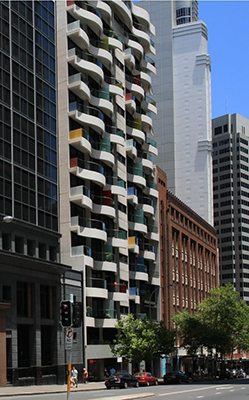 | 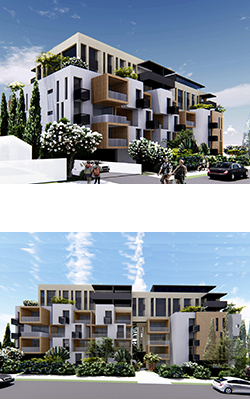 | |
| Against a design requirement for only 150 units, Hiromi’s submission comfortably exceeded the requirements of the brief by designing in 173 apartments on a challenging site in this “design excellence” competition entry in Parramatta, NSW. | We also win awards. In June 2017, Hiromi’s design for the KDV Gold Coast Golf and Tennis Academy, her first building in her own right, and Shiro’s inaugural project, won the 2017 Queensland Institute of Architects’ state design award for commercial architecture. | |
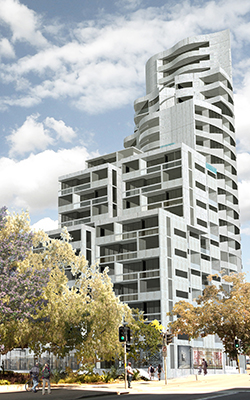 | 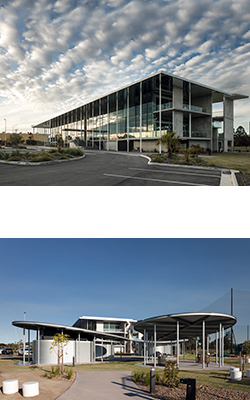 |
